Vicony Tea Directory


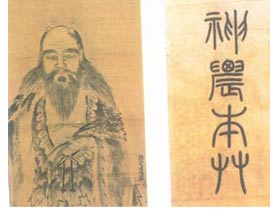 |
| The Portrait of Shen Nong |
Chinese Tea
A Brief Introduction
The practice of drinking tea has had a long history in China, having originated from there. The Chinese drink tea during many parts of the day such as at meals for good health or simply for pleasure. Although tea originates from China, Chinese tea generally represent tea leaves which have been processed using methods inherited from ancient China. According to popular legend, tea was discovered by Chinese Emperor Shennong in 2737 BCE when a leaf from a Camellia sinensis tree fell into water the emperor was boiling. Tea is deeply woven into the history and culture of China. The beverage is considered one of the seven necessities of Chinese life, along with firewood, rice, oil, salt, soy sauce, vinegar.

Some writers classify tea into four categories, white, green, oolong and black. Others add categories for red, scented and compressed teas. All of these come from varieties of the Camellia sinensis plant. Chinese flower teas (花茶), while popular, are not a true teas. Most Chinese teas are consumed in China and are not exported, except to Chinese-speaking communities in other countries. Green tea is the most popular type of tea used in China.
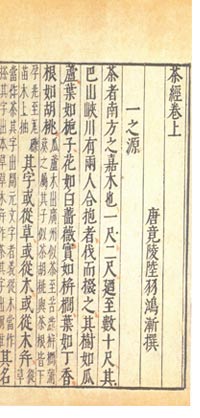 |
|
| The Classic of Tea Cha Jing 茶經 |
The History of Tea in China
The history of tea in China is long and complex. The Chinese have enjoyed tea for millennia. Scholars hailed the brew as a cure for a variety of ailments; the nobility considered the consumption of good tea as a mark of their status, and the common people simply enjoyed its flavor.
Tea was first discovered by the Chinese inventor Shennong in 2737 BC. It is said that the emperor liked his drinking water boiled before he drank it so it would be clean, so that is what his servants did. One day, on a trip to a distant region, he and his army stopped to rest. A servant began boiling water for him to drink, and a dead leaf from the wild tea bush fell into the water. It turned a brownish color, but it was unnoticed and presented to the emperor anyway. The emperor drank it and found it very refreshing, and cha (tea) was born.
While historically the origin of tea as a medicinal herb useful for staying awake is unclear, China is considered to have the earliest records of tea drinking, with recorded tea use in its history dating back to the first millennium BC. The Han Dynasty used tea as medicine. The use of tea as a beverage drunk for pleasure on social occasions dates from the Tang Dynasty or earlier.
Lu Yu's statue in Xi'an.The Tang Dynasty writer Lu Yu's 陸羽 (729-804) Cha Jing 茶經 is an early work on the subject. According to Cha Jing writing, around AD 760, tea drinking was widespread. The book describes how tea plants were grown, the leaves processed, and tea prepared as a beverage. It also describes how tea was evaluated. The book also discusses where the best tea leaves were produced.
At this time in tea's history, the nature of the beverage and style of tea preparation were quite different from the way we experience tea today. Tea leaves were processed into compressed cakes form. The dried teacake, generally called brick tea was ground in a stone mortar. Hot water was added to the powdered teacake, or the powdered teacake was boiled in earthenware kettles then consumed as a hot beverage.
A form of compressed tea referred to as white tea was being produced as far back as the Tang Dynasty (618-907 A.D.). This special white tea of Tang was picked in early spring, when the tea bushes had abundant growths which resembled silver needles. These "first flushes" were used as the raw material to make the compressed tea.
Chinese Main Tea Growing Areas
The tea growing areas in China are divided into four districts:
- The South-West China District: It is the oldest tea growing area of China, producing a lot of varieties, such as black tea, green tea, tuocha, and Pu’er tea.
- The South China District: It is the most suitable area for tea tree growing.
- The South of Yantze River District: It is the principal area of Chinese tea.
- The North of Yangtze River District: The main produce in this location is green tea.
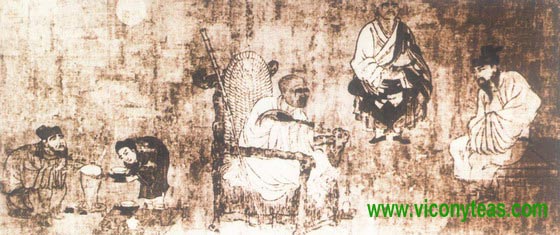 |
| A masterpiece by chinese ancient famous painter,Liben Yan,showing a scene of people of Tang Dynasty boiling tea. |
Chinese Main Tea Varieties
Chinese teas is classified into six main categories. These are green, black, oolong white, yellow and dark tea (which is mainly compressed tea). “Scented tea" can be green, black or oolong tea, which is processed together with fragrant flowers.
Each of the six categories contain many varieties, according to the production area, processing technology and quality criteria. Within these varieties you have several sorting grades.
Green tea accounts for over 60% of the Chinese tea production. Its main varieties are fried green tea, with 10 sub-varieties: pan-fried dried and sun-dried; steamed green tea, with two sub varieties and “origin green teas” with 14 authentic origins.
Black tea has the main varieties: Congou black tea, divided into nine main origins, black broken tea, with the standard grades for leaf (FOP, OP, P), broken, etc., and Souchong black tea, divided into Lapsang and Smokey Souchong.
Oolong tea: there are about 100 different species for the “Oolong family." Very famous origins are: Tieguan Yin, and most of the “Rock Teas”.
White tea: it is only slightly fermented; it is a very special product in China, mainly produced in Fujian Province. It is classified into the following varieties according to the varieties of tea trees and the degrees of maturity of leaves: “Flowery Pekoe” or “Silver needle”, “White Peony”, “Kung Mee” and “Shou-mee”.
Yellow tea: is an unfermented tea, produced mainly for domestic consumption, in Anhui and Hubei; the infusion is yellow and has a mellow taste; the best known is probably “Junshan Yinzhen”.
Dark tea: Most of the dark teas are compressed teas, also called Tea Bricks. The most ancient way of making tea is by compressing it in moulds. Dark compressed tea has eight sub varieties, green compressed tea has five sub varieties of which Pu’er cubic packs and Tuo cha are quite well-known in Europe, and there is black compressed tea.
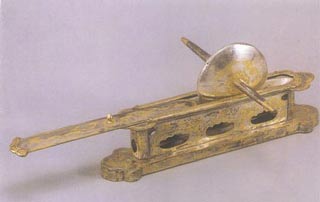 |
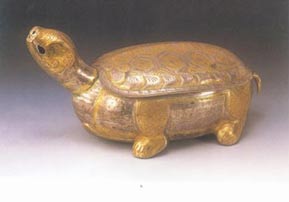 |
||
| The unearthed tea set used by imperial court of the Tang Dynasty from the hypogeum of the pagoda of the Famen Temple in the Fufeng county, Shangxi province in 1987 once again proved the existence of the tea ceremony recorded by Yu Lu in Tea Classic | |||
See Also:
- Chinese Tea
- Chinese Tea Ceremony
- Chinese Top Ten Famous Teas
- Tea Drinking in Chinese Ming Dynasty
- Tea Drinking in Chinese Song Dynasty
- Tea Drinking in Chinese Tang Dynasty
- Chinese Tea Drinking History Before Tang Dynasty
| Green Tea | Black Tea | White Tea | Yellow Tea | Oolong Tea | Dark Tea | Pu Erh | Scented | Flowering | Herbal | Tea Powder |
| Navigation |
| Home (ViconyTeas) |
| Tea Directory (VTD) |
| Tea Importers |
| Tea Exporters |
| Tea Wholesalers |
| Informative Tea Web |
| Tea Association |
| Tea Encyclopedia |
| Online Tea Shop |
| Tea Dictionary Online |
Copyright©2016 | Chinese Tea
